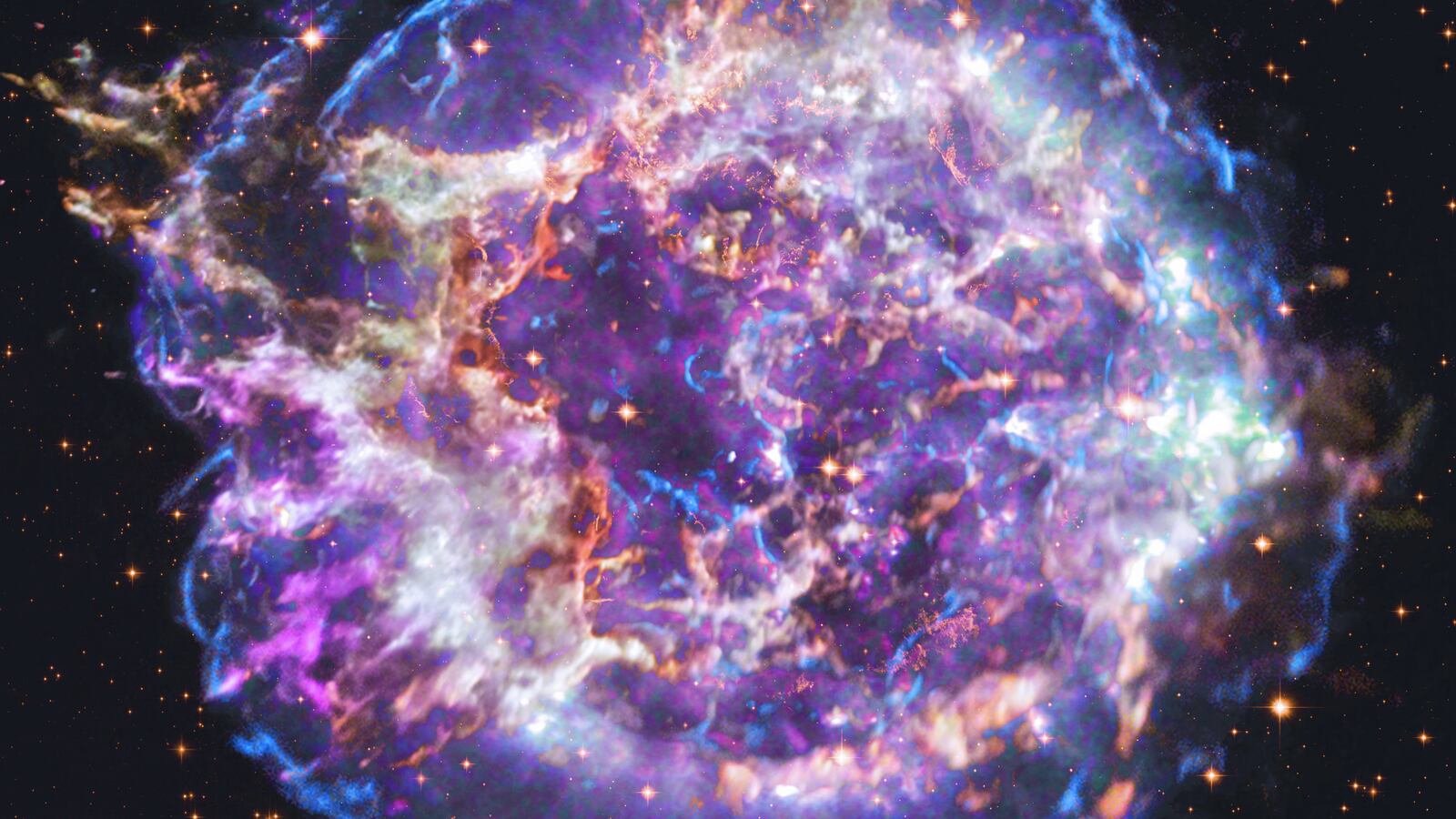NASA just released a new gallery of images that meld X-ray data from the Chandra X-Ray Observatory with other observations made by instruments like the Hubble Space Telescope. The result is a slew of brilliant photos showing off old objects in a form that we’ve never seen before. And the images are a tantalizing taste of what we can expect in the coming years once the James Webb Space Telescope and other new instruments begin their science missions in earnest.
The new photo gallery depicts five images astronomers have studied for decades, but the X-ray data helps to illuminate features that are invisible through more conventional observations. Above, you can see a picture of Cassiopeia A, a supernova remnant 11,000 light-years away. X-rays reveal different concentrations of elements like silicon (red), sulfur (yellow), calcium (green), and iron (light purple). That image also combines radio-wave data taken by the earthbound Karl Jansky Very Large Array (dark purple, blue, and white), plus an optical image taken by Hubble (orange).
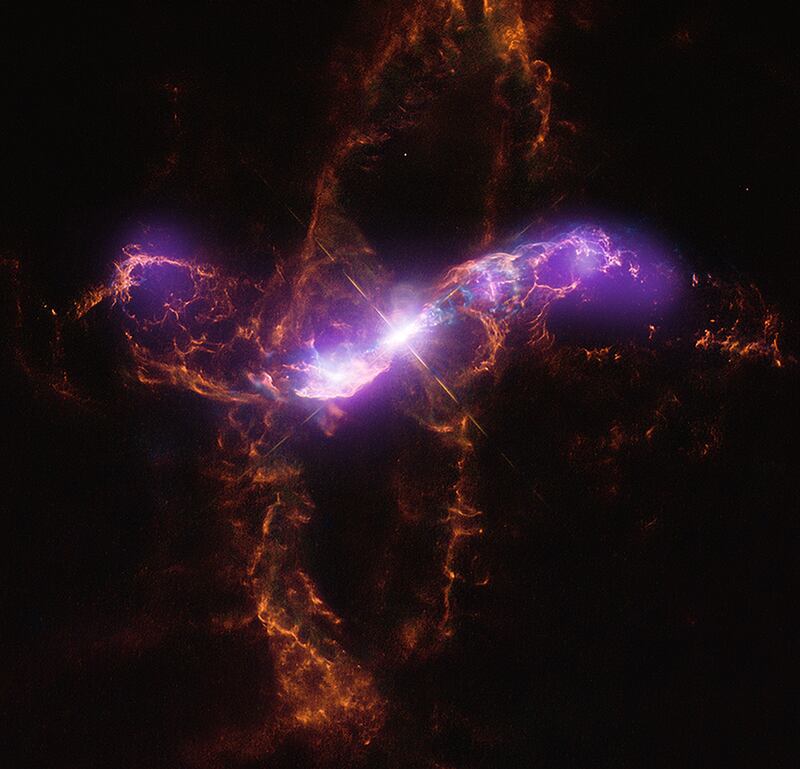
R Aquarii, a white dwarf star and a red giant that orbit one-another. In the new photo, X-ray data from Chandra (in purple) shows jets of hot gas from the white draft striking surrounding material and creating massive shockwaves, like sonic booms from supersonic planes.
NASAThe other objects in the gallery include the stellar pair R Aquarii, the Guitar Nebula, the galaxy cluster Abell 2597, and the spiral galaxy NGC 4490.
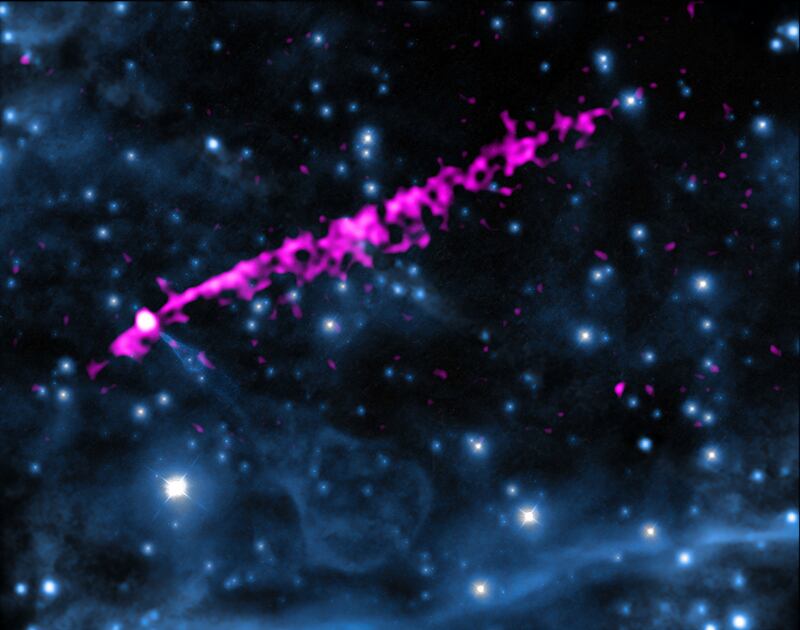
The Guitar Nebula, created by a neutron star traveling at 1,000 miles per second. The resulting shockwaves have produced a guitar-shaped structure (in blue). The X-ray stream (in pink) is created by the magnetic poles of the star.
NASAIn combining different sets of observations from different instruments, astronomers hope to get a much better understanding of how these kinds of objects formed and are currently behaving. The new photos are a sign of what’s to come as we move forward with missions like the JWST (which observes the universe in infrared) and the Imaging X-ray Polarimetry Explorer (a joint mission by NASA and the Italian Space Agency to study cosmic X-rays).
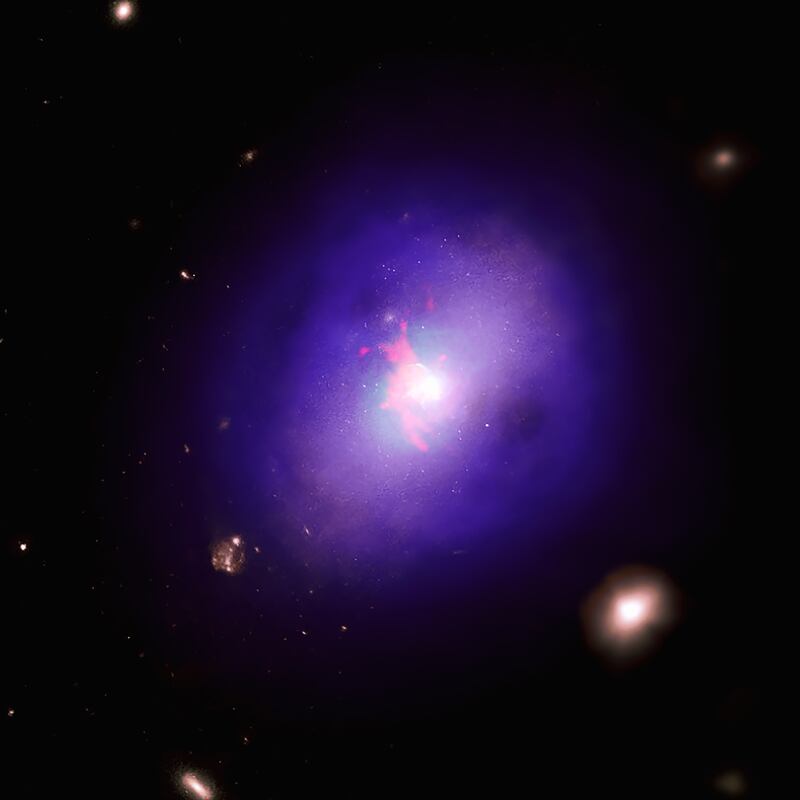
The galaxy cluster Abell 2597. A supermassive black hole at the center drives massive amounts of gas outward and inward, creating bubbles within it.
NASAHard to imagine that in a few years, these types of space photos will simply be the norm.
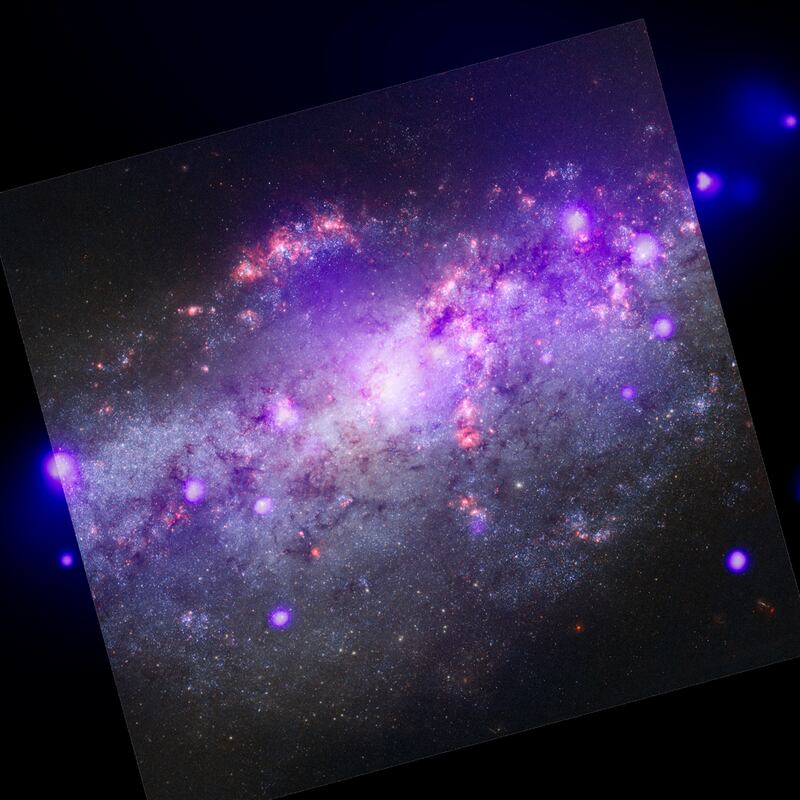
Spiral galaxy NGC 4490, which has collided with a smaller galaxy. Scientists hope to use combined data from different instruments to see how gravitational interactions between the two bodies can encourage the formation of objects like neutron stars and black holes. You can see X-rays from Chandra (purple) alongside optical observations taken by Hubble (red, green, and blue).
NASA
